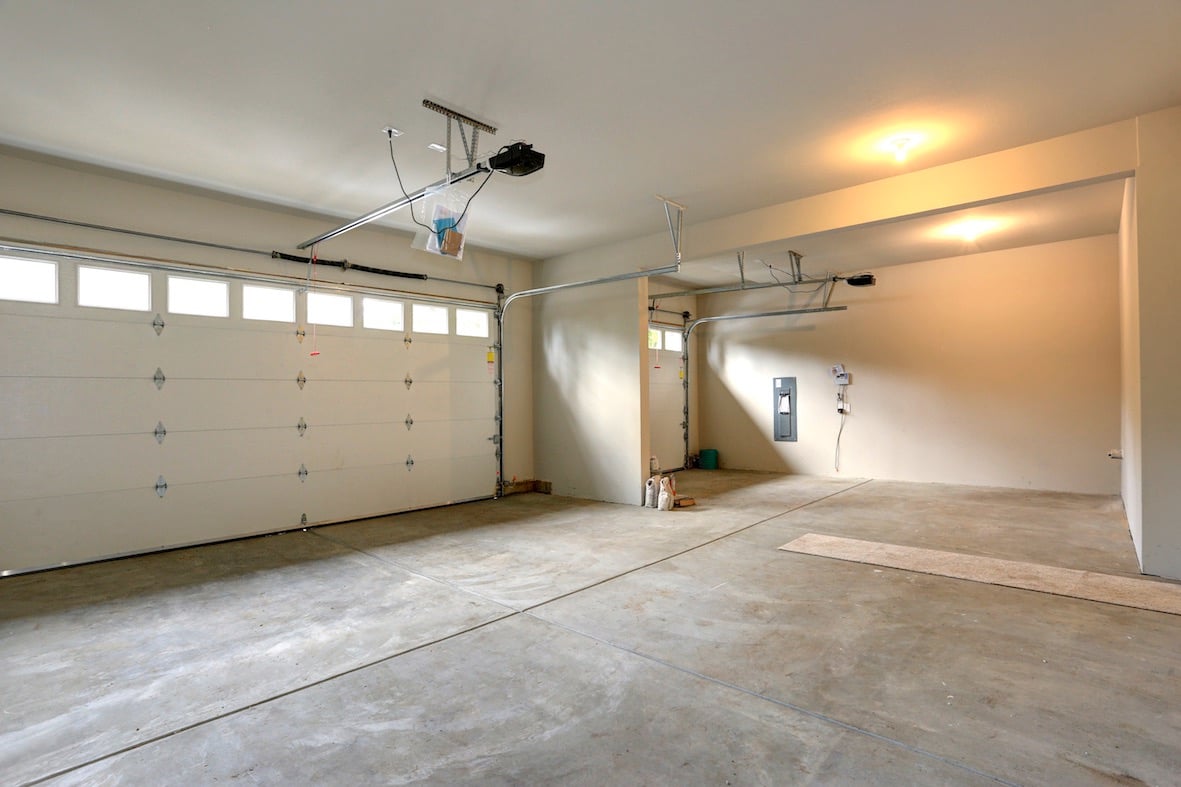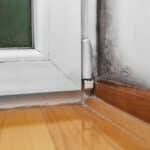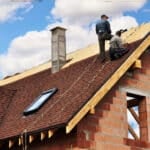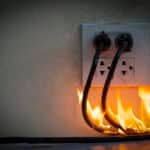Why are garages (both attached and detached) fire hazards?
- Oil or gasoline can drip from cars. These fluids may collect unnoticed and eventually ignite.
- Flammable liquids, such as gasoline, oil and paint, are commonly stored in garages. Some other examples are brake fluid, degreaser, motor oil, varnish, lighter fluid, and fluids containing solvents, such as paint thinner. These chemicals are flammable in their fluid form, and some may create explosive vapors.
- Heaters and boilers, which are frequently installed in garages, create sparks that can ignite fumes or fluids. Car batteries, too, will spark under certain conditions.
- Mechanical or electrical building projects are often undertaken in the garage. Fires can easily start while a careless occupant is welding near flammable materials.
Doors
The 2006 edition of the International Residential Code (IRC) states the following concerning doors that separate garages from living areas:
R309.1 Opening Penetration
Openings from a private garage directly into a room used for sleeping purposes shall not be permitted. Other openings between the garage and the residence shall be equipped with solid wood doors not less than 1-3/8” (35 mm) in thickness, solid- or honeycomb-core steel doors not less than 1-3/8” (35 mm) thick, or 20-minute fire-rated doors.
In addition, check for the following while inspecting doors that separate garages from living areas:
- While not required by the IRC, it is helpful if there is at least one step leading up to the door from the garage. Gasoline fumes and other explosive gases are heavier than air, and they will accumulate at ground level. Their entry beneath a door will be slowed by an elevation increase.
- Doors should have tight seals around their joints to prevent seepage of fumes into the living areas of the house. Carbon monoxide, with the same approximate density as air (and often warmer than surrounding air), will easily rise above the base of an elevated door and leak through unsealed joints.
- Doors should be self-closing. Many homeowners find these doors inconvenient, but they are safer than doors that can be left ajar. While this requirement is no longer listed in the IRC, it is still a valuable recommendation.
- If doors have windows, the glass should be fire-rated.
- Pet doors should not be installed in fire-rated doors. Pet doors will violate the integrity of a fire barrier.
Walls and Ceilings
The 2006 edition of the IRC states the following concerning garage walls and ceilings:
The garage shall be separated from the residence and its attic area by not less than 1/2-inch (12.7 mm) gypsum board applied to the garage side. Garages beneath habitable rooms shall be separated from all habitable rooms above by not less than 5/8-inch (15.9 mm) Type X gypsum board or equivalent. Where the separation is a floor-ceiling assembly, the structure supporting the separation shall also be protected by not less than 1/2-inch (12.7 mm) gypsum board or equivalent. Garages located less than 3 feet (914 mm) from a dwelling unit on the same lot shall be protected with not less than 1/2–inch (12.7 mm) gypsum board applied to the interior side of exterior walls that are within this area. Openings in these walls shall be regulated by Section 309.1. This provision does not apply to garage walls that are perpendicular to the adjacent dwelling unit wall.
In addition, check for the following while inspecting walls and ceilings:
-
In garages that have access to the attic, a hatch cover made from an approved, fire-rated material should protect this access at all times. Missing or opened covers should be called out, as should covers made from flammable materials, such as thin plywood. Garage attic door must be constructed such that the 45-minute rating is maintained; any drywall edges on both the hatch and the surrounding area exposed to physical damage should be protected. The cover or door should be installed so that it is permanent (non-removable), with latching hardware to maintain it in a closed position. This could be accomplished by the use of spring-loaded hinges, a door closer, or hardware that will not allow it to be left in an open position when not in use. A single bolt-type or hook-and-eye hardware does not provide a positive closure, since these would allow the door to be left open. Likewise, drywall screws are fasteners–not hardware–so they cannot be used as the only means of keeping access doors closed.
- The living space should be separated from the garage by a firewall that extends from the floor to the roof. If the ceiling material is fire-rated, the firewall can terminate at the ceiling.
- Drywall joints shall be taped or sealed. Joints shall be fitted so that the gap is no more than 1/20-inch, with joints backed by either solid wood or another layer of drywall such that the joints are staggered.
Ducts
The 2006 edition of the IRC states the following concerning ducts that penetrate garage walls and ceilings:
R309.1.1 Duct Penetration
Ducts in the garage and ducts penetrating the walls or ceilings separating the dwelling from the garage shall be constructed of a minimum No. 26-gauge (0.48 mm) steel sheet or other approved material, and shall have no openings in the garage.
Dryer exhaust ducts that penetrate garage walls are serious fire hazards. These ducts are generally made from plastic and will easily melt during a fire, creating a large breach in the firewall.
Floors
The 2006 edition of the IRC states the following concerning floors in garages:
Garage floor surfaces shall be of approved, non-combustible material. The area of the floor used for parking of automobiles or other vehicles shall be sloped to facilitate the movement of liquids to a drain or toward the main vehicle entry doorway.
Also check for the following:
- A curb should be present along the perimeter of the garage floor. This curb should be designed to prevent fluids from entering the living areas of the house. Curbs are often useful barriers for melted snow carried into the garage by automobiles, but curbs can also keep chemical spills contained in the garage.
- Water heaters should be elevated above the floor by at least 18 inches. A pilot light may ignite spilled fluid or floor-level flammable fumes if the water heater is placed at floor level.
Concerning items placed on the floor:
- All flammable liquids should be stored in clearly labeled, self-closing containers, and in small amounts. They should be stored away from heaters, appliances, pilot lights, and other sources of heat and flame.
- Propane tanks should never be stored indoors. If they catch fire, a serious explosion may result. Propane tanks are sturdy enough to be stored outdoors.
- The floor should be clear of clutter. Loose papers, matches, oily rags, and other flammable items are dangerous if they are strewn about the garage floor.
General safety tips:
- Use light bulbs with the proper wattage.
- Do not overload electrical outlets.
- Tape down all cords and wires so that they are not twisted or accidentally yanked.






